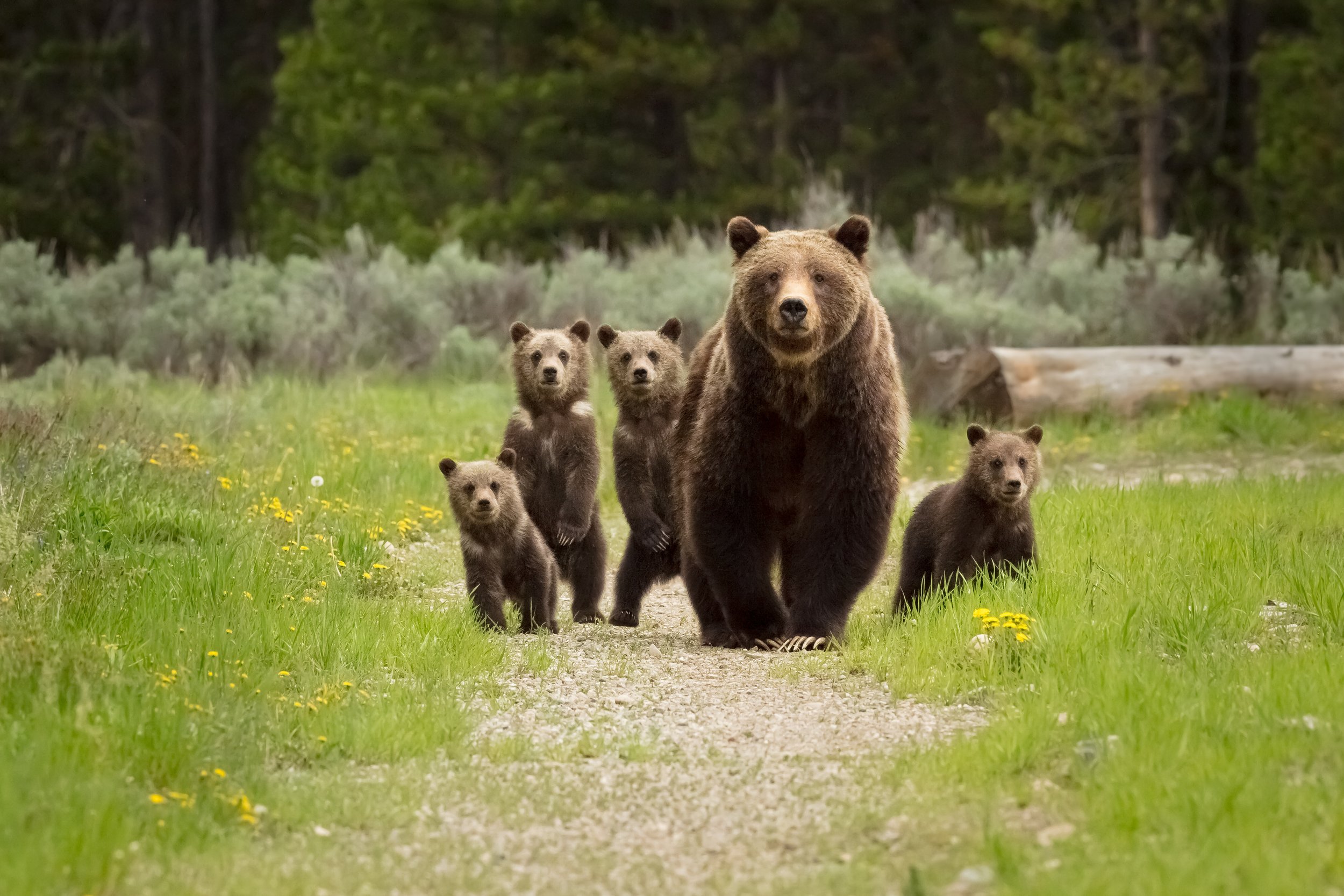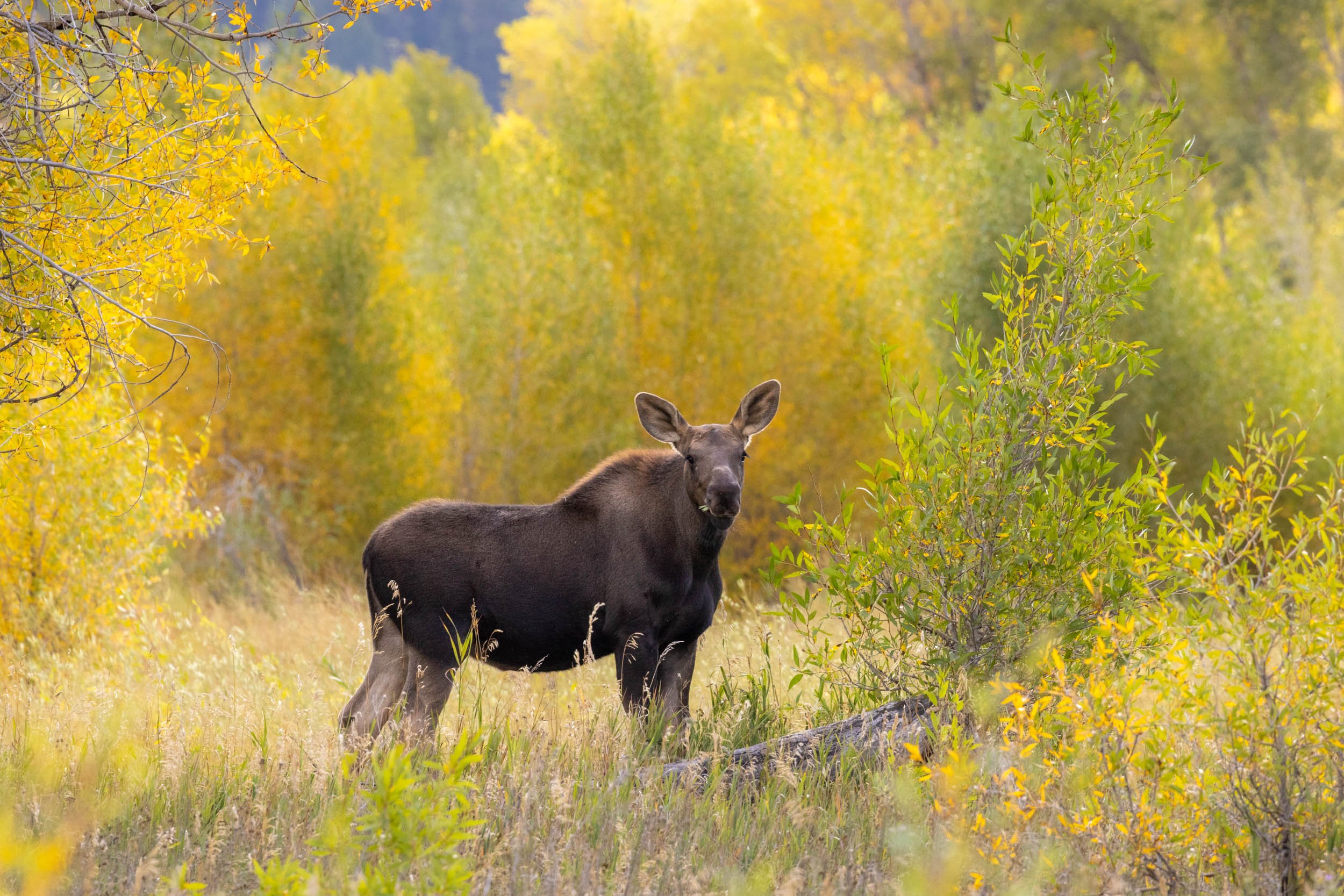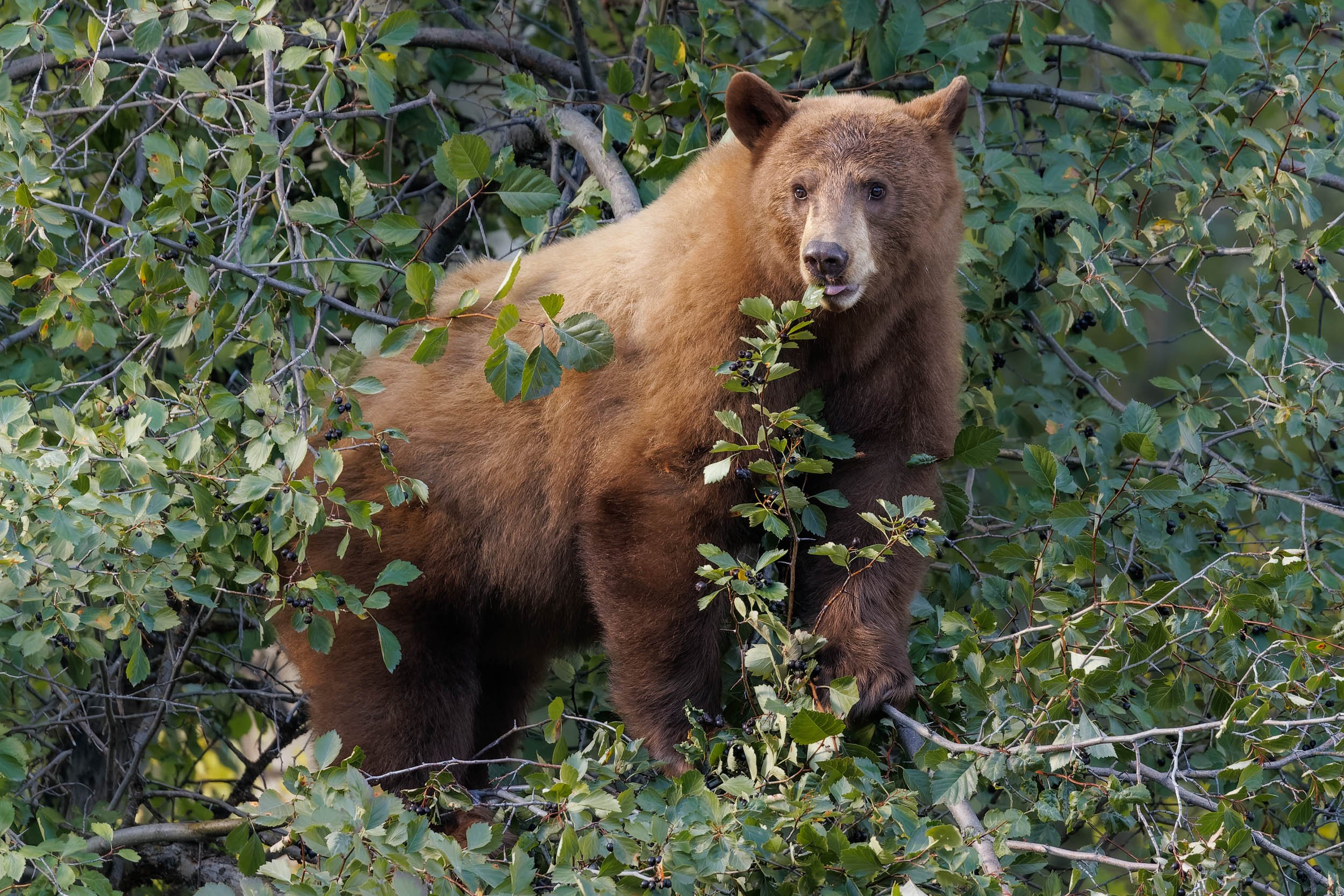
Seasons in the Tetons & Yellowstone
Spring (March-Early June)
Spring is a time of extreme change. After the long and dark winter in the Greater Yellowstone, warmer temperatures begin to thaw at lower elevations, though snow may persist in shadowed patches at lower elevations as well as at higher elevation areas until June. Species that have migrated out of the Tetons and Yellowstone for the winter begin their journey back to the area. Elk on the National Elk Refuge begin their journey to higher elevations and can be seen moving through the Jackson Hole Valley. Pronghorn migrate back from their southern range near Pinedale. Mountain bluebirds, osprey, bald eagles, and countless other birds return to their summer home in the Greater Yellowstone.
Depending on the amount of snow in a given winter, large male bears may begin emerging from hibernation as early as March followed by females and females with cubs into late May. Spring is often when grizzlies are most active in the Tetons as they forage for food after a long winter nap. From bear cubs of the year to tiny newborn moose, spring is the best time to see all the adorable newborn animals throughout the ecosystem. With temperatures cooler than mid-summer and food more available than in winter, many species may be most visible during this period.
Towards the end of spring, the landscape begins to turn from white and brown to green with new leaves blooming. Golden balsamroot and purple lupine flowers sprout from the ground and add vibrant colors to the now vibrant landscape. By May 1 the inner park road in the Tetons is open and by May 15 plowing on the southern entrance to Yellowstone is complete, making day trips to Yellowstone possible again from the Jackson Hole area.









Summer (Early June-August)
With the onset of summer, access to all areas of both Grand Teton and Yellowstone becomes easier with snow gone from everywhere but the high alpine. By June, the landscape is almost unrecognizable compared to the early days of spring and the beauty of the region’s flora and fauna is on full display. The arrival of species back to the region means that throughout the ecosystem, wildlife is most widespread and abundant. From bison and pronghorn to grizzlies and wolves, every species that calls this area home is back!
August brings the bison rut which is one of the most special and dramatic sights of summer. Large male bison are searching for a mate and they are frequently wallowing in the dust and fighting with one another for access to females.
Wildflowers are mostly gone from the valley floor once summer heat sets in, but beautiful meadows of flowers can be found at slightly higher elevations as the summer goes on.
Summer days are long, so there will be plenty of light to chase throughout the day. Being out at dawn and/or dusk is crucial this time of year as many species rest away from view when the temperatures get hot and return to foraging when the sun is less intense. Worried about bad weather? Fear not, visually dramatic storms frequently roll through in the afternoon making for incredible images and light. Cloudier days are also welcome as they bring cooler temperatures which is always a positive for wildlife activity. Wildfire smoke may be present in later summer, though this too can reduce the intensity of light and create visually stunning scenes.











Fall (September-Late October)
Fall is often the time of year when most species are most active as they prepare for the coming winter. With temperatures fluctuating between snow, rain, and sunshine, weather is unpredictable but generally cooler than mid-summer making it possible for more heat-sensitive species like moose to be seen out in the open. Moose are also in their rut this time of year meaning it is not uncommon to spot bulls sparring for the right to mate. Elk are also rutting during this time and the distinctive and haunting sound of bulging echoes through the air each morning and evening. Fall is also the best time of year to catch black bears and occasionally grizzlies foraging in the bushes and climbing trees for berries as they stock up for winter.
The changing of the leaves comes in two phases in the Greater Yellowstone with cottonwoods turning gold first in mid-September and aspens turning yellow and orange sometime around the end of September through early October. Early October may also bring the first snow of the season in the alpine making for a dramatic mix of fall color and snowcapped mountains if the timing aligns.
Throughout the fall birds are starting to migrate south for the winter. Depending on snow conditions, great grey and great horned owls may stick around in the valley or migrate to areas with less snow when it becomes too deep for successful hunting.














Winter (Late November-March)
Winter in the Greater Yellowstone is by far the most under-rated time to visit despite being many local photographers’ favorite season. As snow blankets the valley floor in the Tetons by late November, the region turns into a photographic paradise. Access to parts of Grand Teton and Yellowstone are limited starting in November, yet a large portion of Grand Teton National Park remains open and accessible, making tours viable year-round. Temperatures can get extremely cold in the Greater Yellowstone, particularly in December, January and February though the air is dry making the feeling of cold much milder than significantly warmer temperatures on the east coast or mid-west. The coldest sub zero days are the prettiest of any time of year with ice crystals and fog refracting soft golden light, ice on the faces of moose or bison, and frost blanketing the trees.
Many species remain in the valley and active all winter including wolves, river otters, coyotes, red foxes, moose, bighorn sheep, elk, martens, eagles, and sometimes great grey owls if snow is shallow. November and December in the Tetons is the best time and place to photograph bull moose. After their rut in September many big bulls congregate together in highly visible locations and even spar with each other from time to time. Moose are not known to form herds quite like this anywhere else. Bighorn sheep are also a winter highlight as they gather on the National Elk Refuge. Rams can be seen slamming their heads into each other during mating season and they are frequently climbing impossibly steep cliffs all winter long. River otters are also most visible during winter months and can be seen diving for fish and tobogganing through deep snow. Watching wildlife in the snow is truly spectacular and your photos will be too.
Day trips in Yellowstone are not offered after Nov 1, but if Yellowstone in winter is on your bucket-list, reach out to us and we can help tailor a multi-day photography adventure to your particular wishes.



















